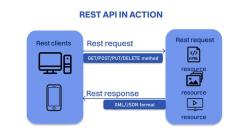What can you do with Windows PowerShell?
Windows PowerShell is a powerful command-line shell and scripting language designed for system administrators, IT professionals, and power users to manage and automate various tasks in the Windows operating system. Here are some of the key capabilities and tasks you can perform with Windows PowerShell:
System Administration:
- Manage user accounts, including creating, modifying, and deleting users.
- Set and change password policies.
- Manage Active Directory (AD) objects, such as users, groups, and computers.
- Configure and manage Windows services.
- Create and manage local and network shares.
- Manage Windows Firewall rules.
- Perform system diagnostics and troubleshooting.
File and Folder Operations:
- Create, copy, move, and delete files and folders.
- Search for files and folders based on specific criteria.
- Perform bulk file and folder operations with scripts.
- Set file and folder permissions.
Networking and Connectivity:
- Configure network adapters and IP addresses.
- Test network connectivity.
- Manage network shares and printers.
- Perform network-related tasks such as ping, tracert, and nslookup.
Software Management:
- Install, update, and uninstall software packages.
- Query and list installed software.
- Manage Windows updates and patches.
- Create and configure software deployment scripts.
Task Automation and Scripting:
- Create custom scripts to automate repetitive tasks.
- Schedule script execution with the Windows Task Scheduler.
- Use conditional statements, loops, and functions to build complex automation workflows.
- Access and manipulate registry settings.
- Create and manage environment variables.
System Information and Monitoring:
- Retrieve system information, including hardware details and system properties.
- Monitor system performance and resource usage.
- Generate reports and logs for system monitoring.
- Collect event logs and system event information.
Remote Management:
- Manage remote Windows systems using PowerShell Remoting.
- Execute commands on remote systems.
- Transfer files and data between local and remote systems.
- Manage remote sessions and connections securely.
Security and Access Control:
- Create and manage security groups and permissions.
- Audit and review security policies and settings.
- Monitor user access and authentication.
- Implement security-related scripts and tasks.
Database Management:
- Interact with databases using PowerShell cmdlets and modules.
- Query, update, and manipulate database records.
- Generate database reports and automate database-related tasks.
Custom Module Development:
- Create custom PowerShell modules to encapsulate and reuse scripts and functions.
- Share modules with other users and administrators.
- Extend PowerShell's capabilities by adding custom cmdlets.
Windows PowerShell is an extremely versatile tool that can be adapted to a wide range of tasks and scenarios. Its scripting capabilities and integration with other Microsoft technologies make it a valuable resource for managing Windows-based systems and performing automation and administrative tasks efficiently.













